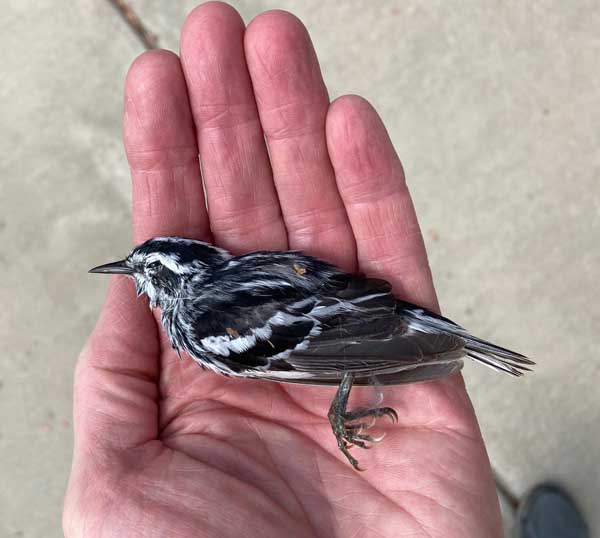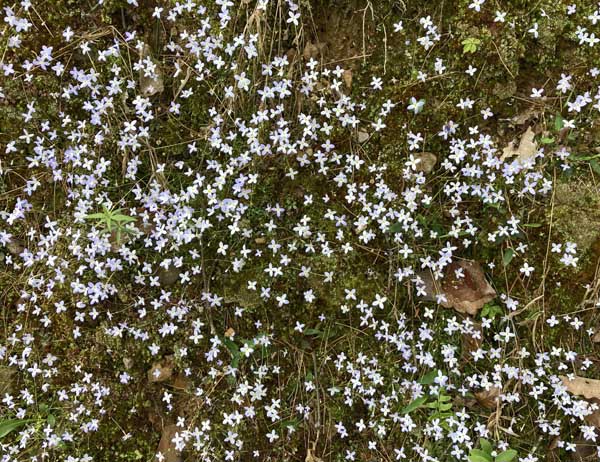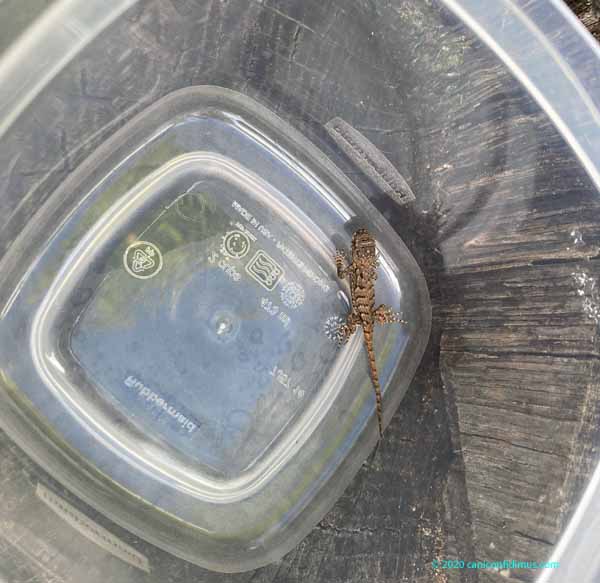I saw this little beauty when I took the dogs out a few days ago.
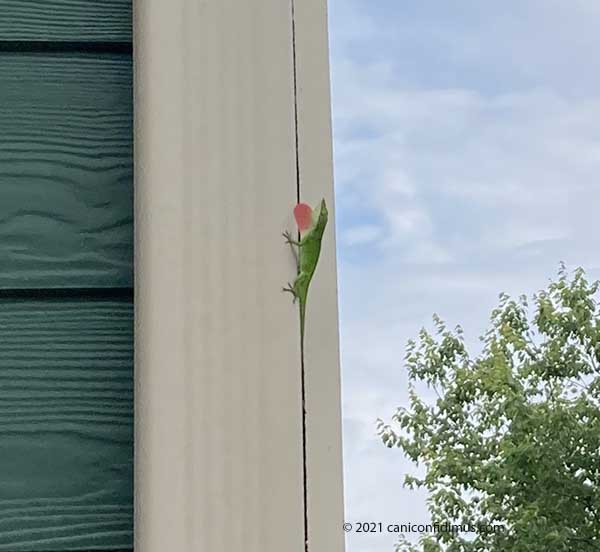
It’s a green anole (anoles carolinensis), climbing the downspout on the corner of the house. They are active in warm weather, which we have been having, and live in trees. And, apparently, houses. I wasn’t sure I remembered the name, so I searched for “green and red lizard in Georgia” and immediately found it. The photo is not great because I took it with my phone and had to enlarge it quite a bit to see the red throat.
This was the scene two days ago when I took the dogs out (I don’t seem to go out unless it’s to take the dogs for a little walk).
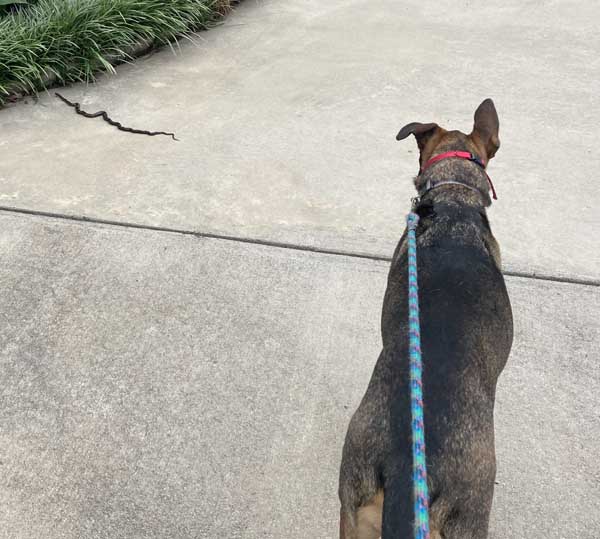
Zoe did not notice the snake. Zeke was familiar with snakes and reacted strongly to them, but maybe Zoe has never had any experience with them. I took both dogs back inside so I could get closer for a photo.
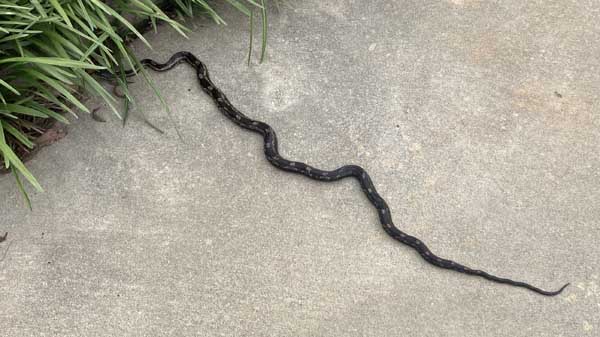
This is a black rat snake. It didn’t move while we were outside, but when I went in for a moment, it got a little closer to the edge of the pavement.
I went back into the garage after taking this shot, but I peeped around the door. As soon as I went in, it slithered up against the liriope and disappeared.
This is from the University of Georgia’s Savannah River Ecology Laboratory:
“Rat snakes occupy a wide variety of habitats including rocky timbered hills, hardwood forests, river floodplains and swamp margins. They are commonly found in abandoned buildings and barns and are often the most common large snake in suburban areas.
Habits: Adult rat snakes primarily eat mice, rats, squirrels, and birds, as well as bird eggs. They are a common predator on wood duck eggs. Juveniles eat small frogs, lizards, and small rodents. Rat snakes are constrictors, and adept climbers that can scale brick walls as well as tree trunks. When frightened they often assume a “kinked” posture and remain motionless. They will vibrate the tail and expel malodorous musk.”
I like having snakes around, although the cats do a pretty good job of controlling rodents, as well as birds and lizards.
Health update: I continue to improve. I have regained a lot of the range of motion in my shoulder, despite a foolish attempt to get down on the floor to help Leah look for a pill she thought she had dropped. My knee is taking longer. I can walk with an almost normal gait, but I can bend my knee only a little past 90 degrees. I can walk up steps, but going down still stretches me calf a little more than is comfortable.
Leah has an appointment with her surgeon next week. She dreads having surgery again, but is ready for some relief from her almost constant pain. I think she’s as worried about how well I take care of the cats as she is the surgery itself.
